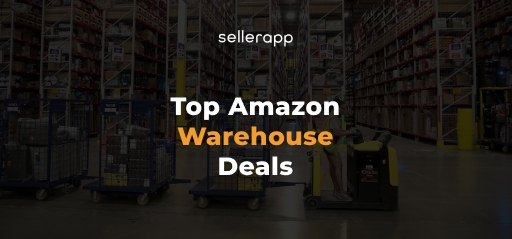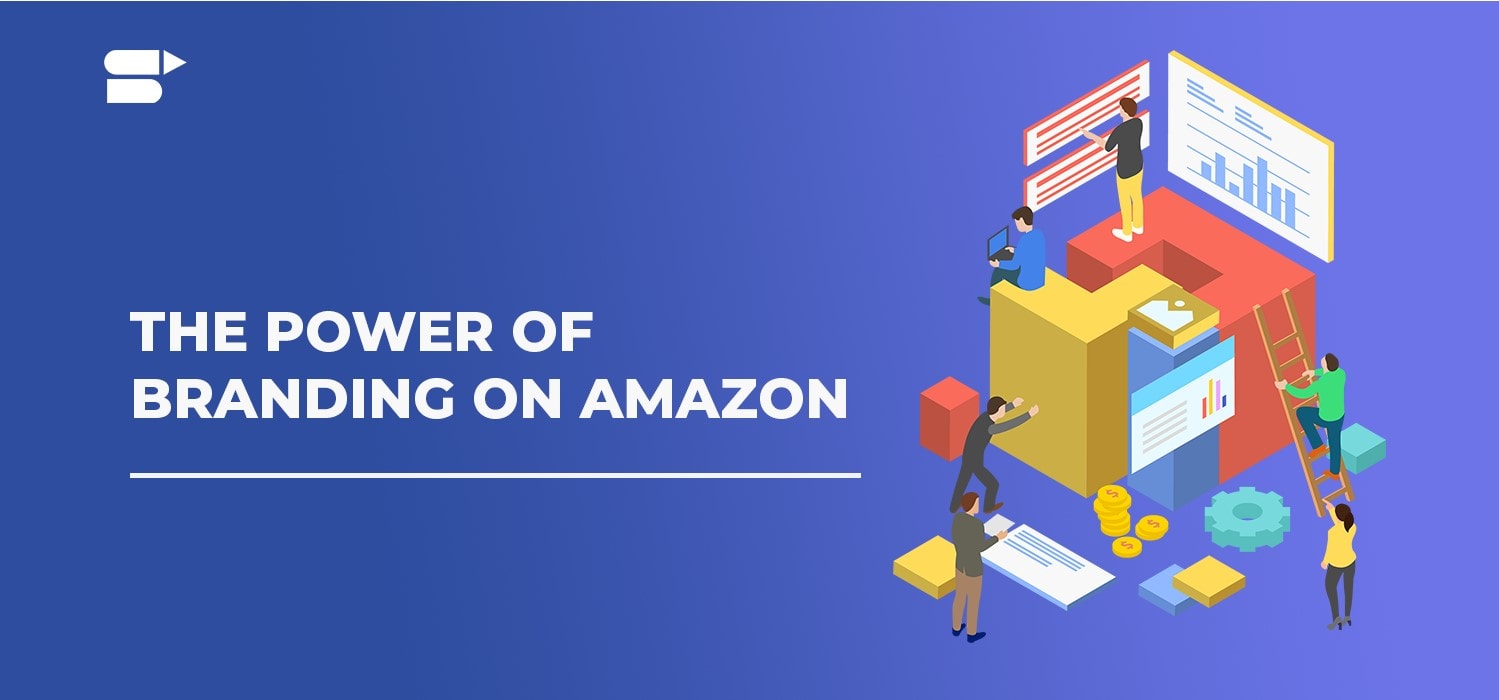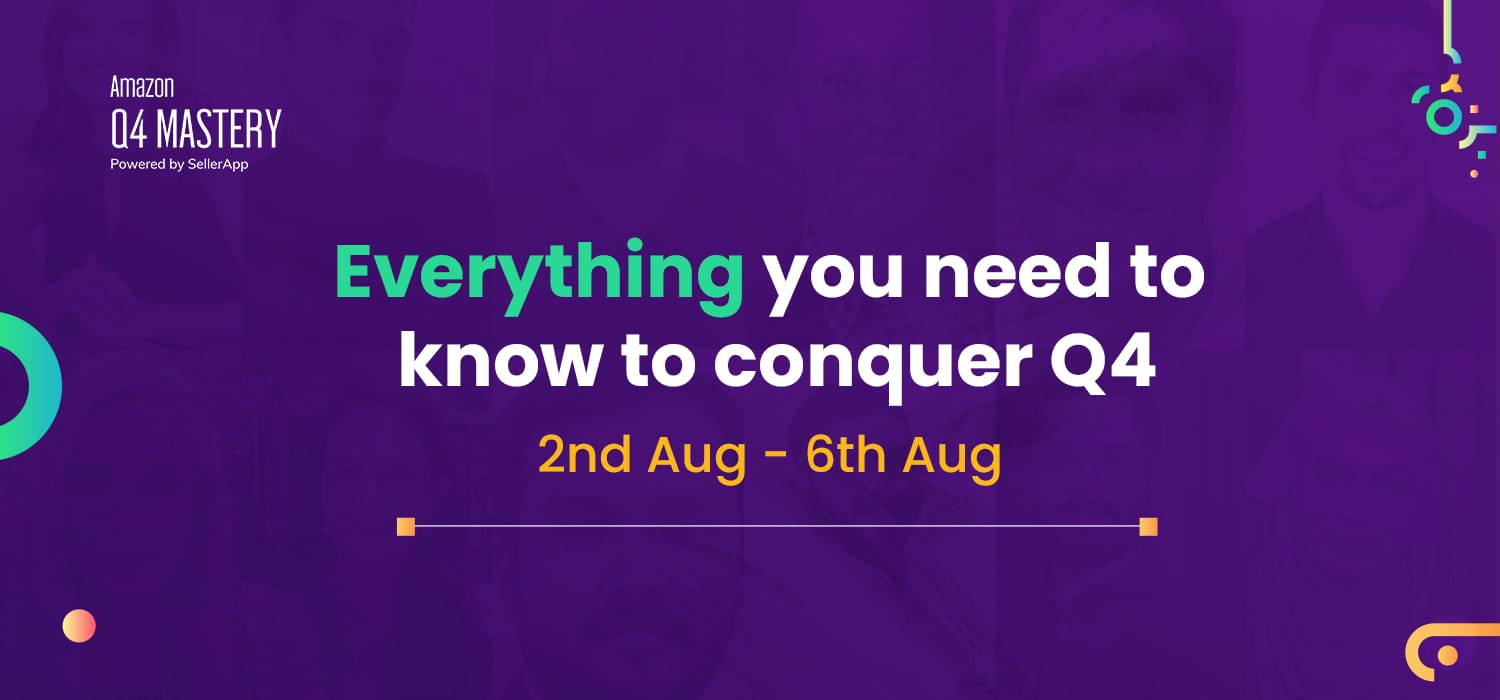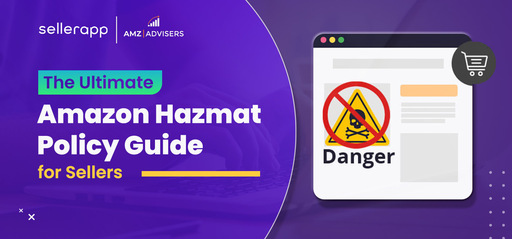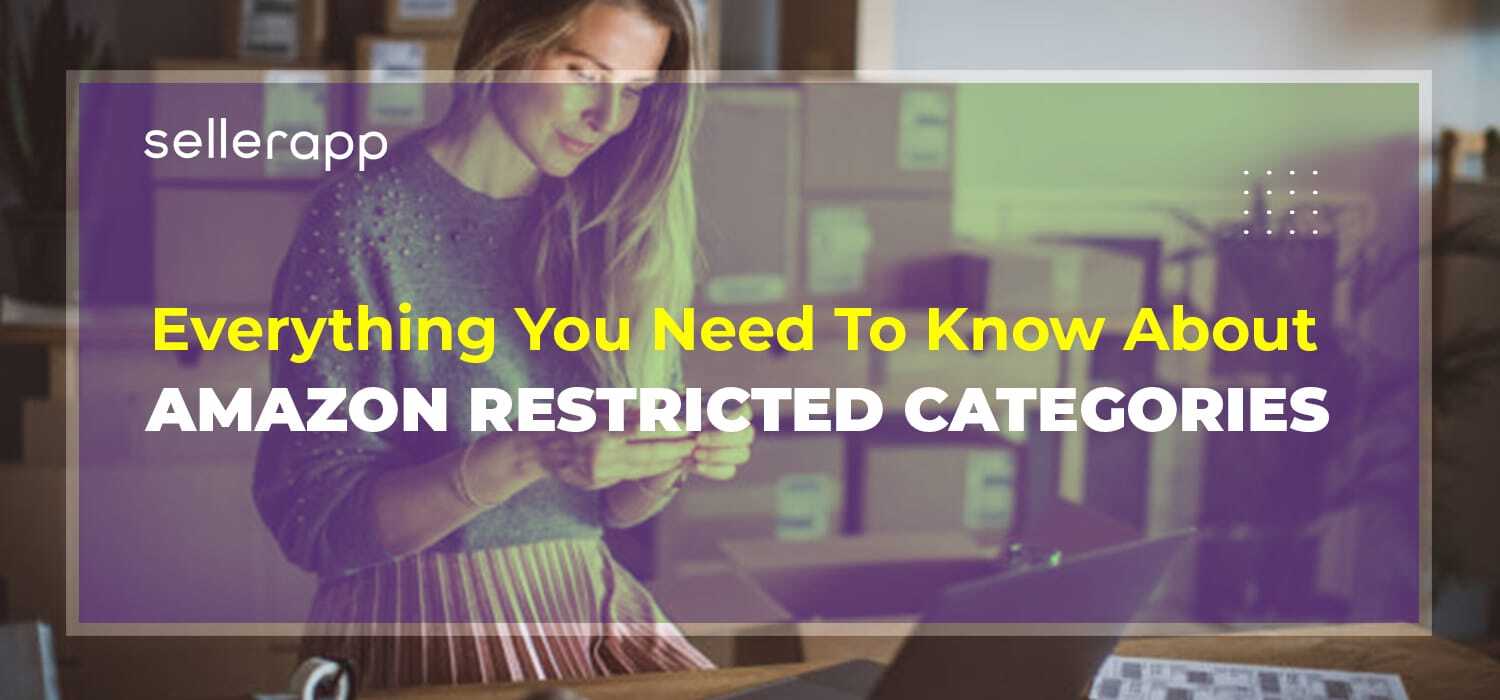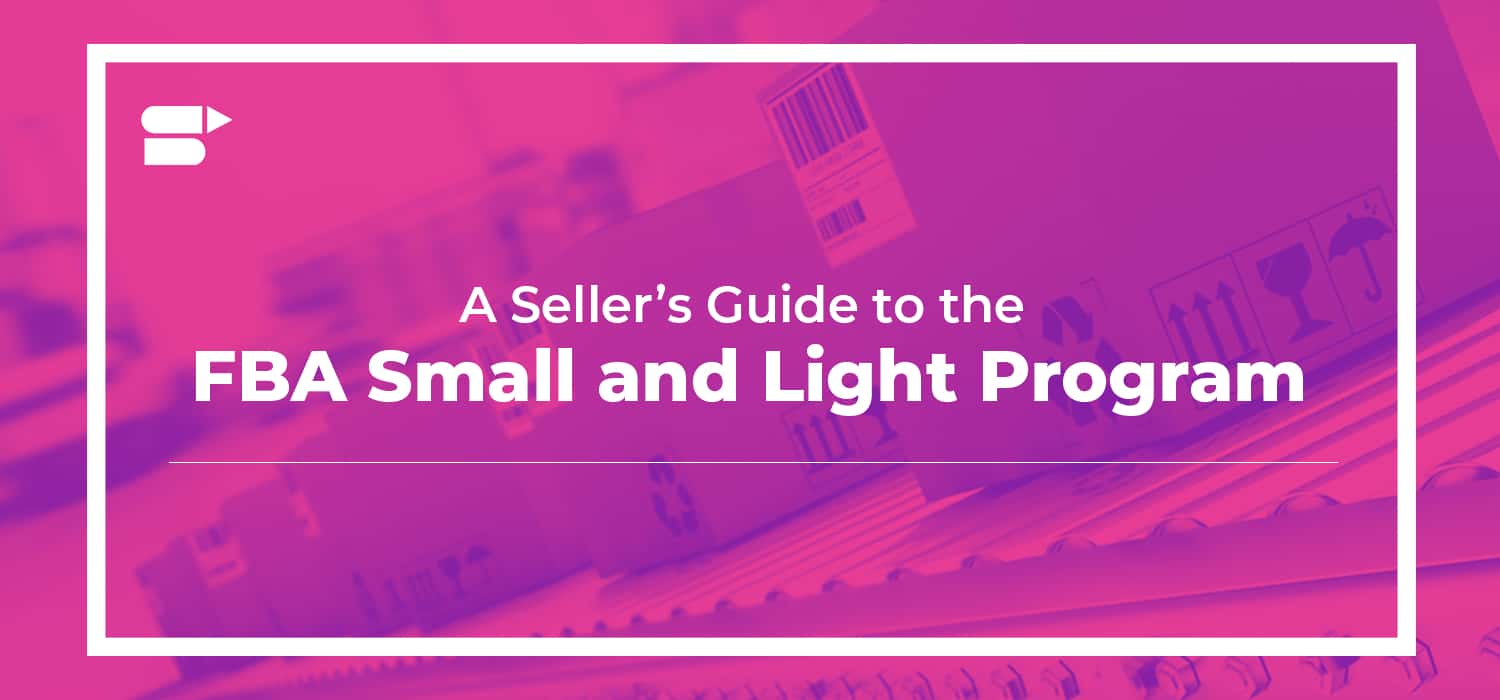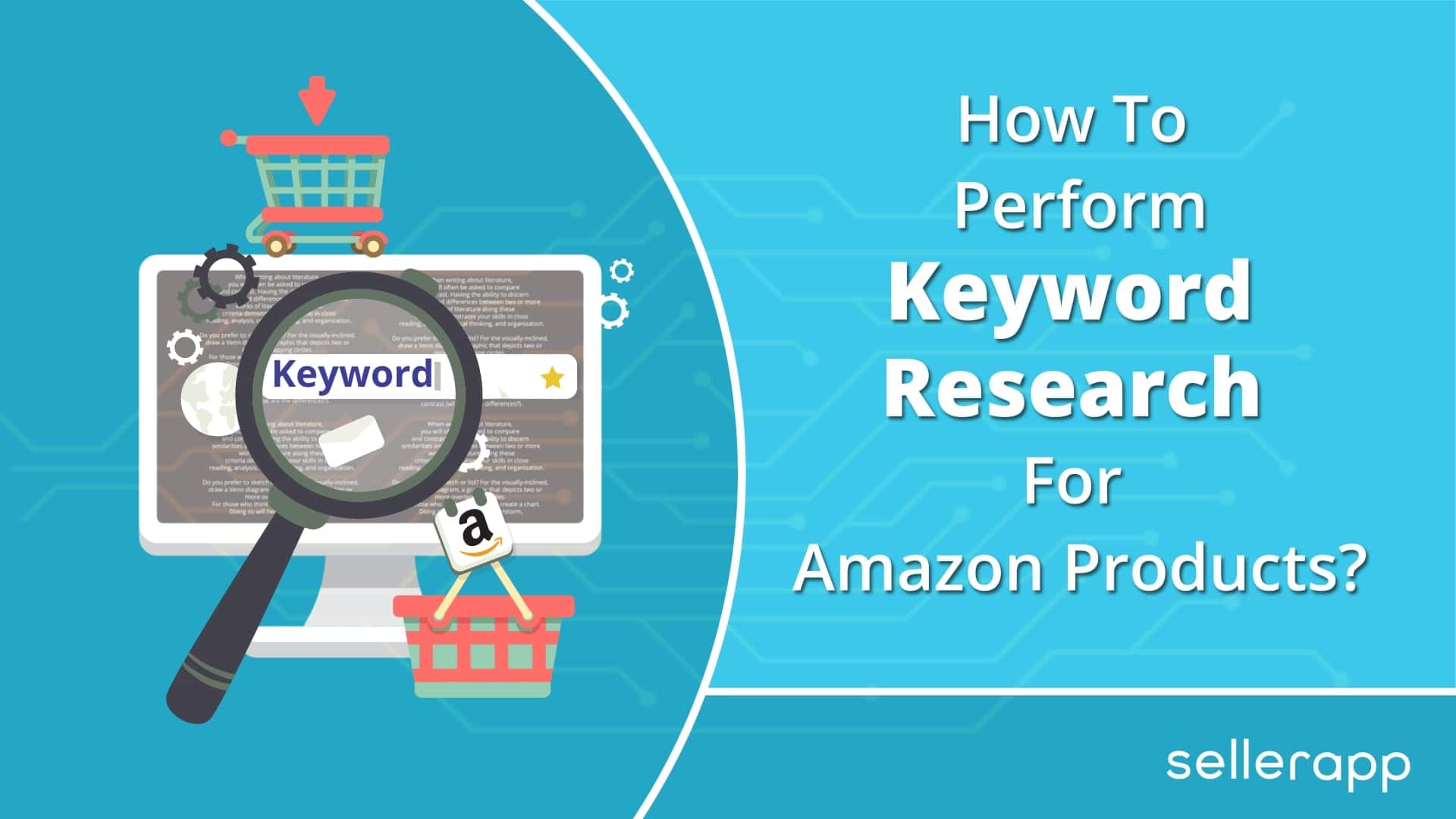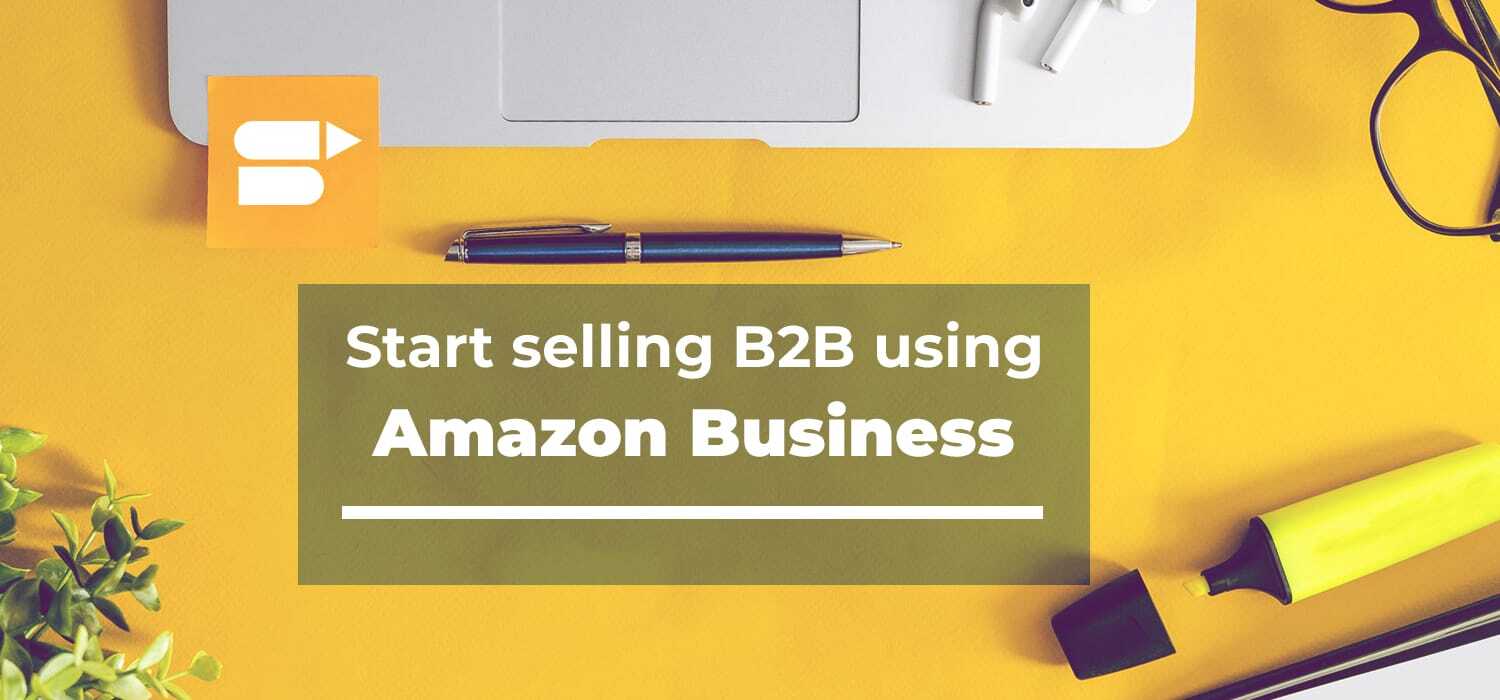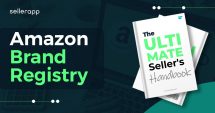Average Order Value Explained: How it impacts Amazon sellers & how to boost AOV on Amazon
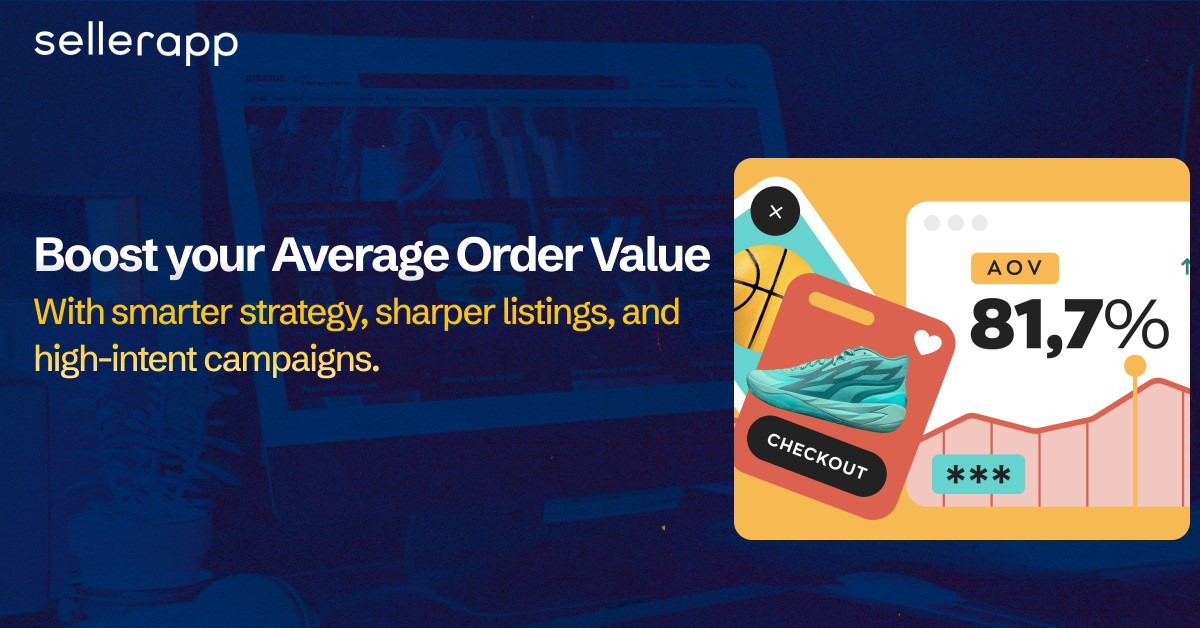
Every Amazon seller wants more sales, but chasing traffic and clicks isn’t the only answer. Average order value quietly holds the key to smarter, more profitable growth. Average order value is directly linked to your ROI, and if bundled smartly or upsold strategically, it can turn everyday carts into higher-value checkouts.
So let’s dig in; not just into what AOV (average order value) is, but what it indicates for Amazon sellers, how to calculate average order value, how you can use it to make better decisions, boost profitability, and grow with intention.
What is Average Order Value (AOV)?
Think of AOV or Average Order Value as your business way of answering this simple question, “On average, how much revenue do you make per order?”
AOV is calculated by dividing your total revenue by the number of orders in a specific time frame. That’s it.
AOV further tells you how well your products are working together, how effective your pricing is, and whether your customers are buying just one item or filling up their cart with more.
When you understand that, you can start making smarter decisions about everything from promotions to product bundles.
Note: Most ecommerce platforms and analytics tools include AOV (average order value) in their dashboards, making it easy to monitor and leverage for strategic decision-making.
Marketplace sellers, such as Amazon sellers, may wonder what is average order value on Amazon? Thus, we’ll elaborate.
What is Amazon’s average order value?
If you’re an Amazon seller, chances are you want to know more specifically about what is Average order value on Amazon. Amazon’s Average Order Value (AOV) refers to the average dollar amount a customer spends per transaction on Amazon.
It’s calculated the same way (using average order value formula) as any other ecommerce AOV (average order value):
Total Revenue ÷ Total Number of Orders over a given time period.
While ‘what is Average Order Value for Amazon’ doesn’t just imply a set number, as it depends on the product category and seasonality, industry data gives an estimate that falls between $45 and $60.
For sellers, this benchmark is useful for setting goals, comparing performance, and optimizing strategies on how to increase the average order value of each transaction.
Ideal Average Order Value benchmarks across categories on Amazon
If you’re wondering how to calculate average order value, these references are important to gauge your success:
| Industry | Average Order Value (AOV) approx. |
|---|---|
| Luxury & Jewelry | $330 – $436 |
| Home & Furniture | $248 – $339 |
| Consumer Goods | $123 – $237 |
| Fashion, Accessories, Apparel | $118 – $196 |
| Food & Beverage | $111 – $125 |
| Beauty & Personal Care | $71 – $77 |
| Pet Care | $76 – $117 |
| Electrical/Commercial Equip | $188 |
| Health & Wellbeing | $54 |
| Toys, Games, Collectibles | $101 |
| Arts & Crafts | $136 |
| Baby & Child | $248 |
| Cars & Motorcycling | $226 |
| Home Accessories/Giftware | $99 |
| Kitchen & Home Appliances | $62 |
What affects Average Order Value? A Deep Dive on the Average Order Value KPI
Multiple factors, some obvious, others often overlooked, are involved when you try to understand how to calculate average order value. In this segment, we’ll mention all the important factors, and in the following we’ll expand on how to use them for maximum benefits.
1. Product & Pricing Structure
High-ticket items like electronics, furniture, or luxury goods naturally raise AOV Average Order Value, whereas low-cost products tend to suppress it. Products should be priced strategically and methodically. For instance, including an anchor pricing automatically reshapes perceived value and thus encourages larger purchases.
Note: For those who don’t know, anchor pricing is a pricing strategy often practiced by ecommerce sellers where they set a higher “original” price next to an offer price just to make it seem more lucrative.
2. Bundling & Product Mix
Bundles (e.g., related or tiered ASIN combos that offer a cumulative discounted price) consistently drive a 10–30% lift in AOV by offering perceived deal value. Blending high-end and low-end SKUs in your mix affects the overall Average Order Value.
For example, our client, Oogies Popcorn, was providing bundle deals, and our Amazon PPC experts added a price comparison in terms of how much you’re paying per ounce.
This helps the consumers make better decisions in terms of saving. But ultimately, when they choose a bundle over a single pack, it raises the total Average Order Value of the purchase.
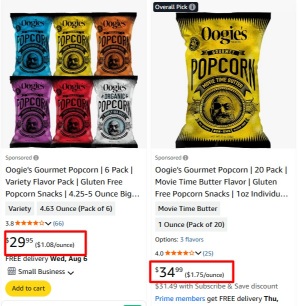
3. Promotions & Discount Mechanics
Well-planned promotions can motivate upsells; poorly structured discounts risk lowering overall ad spend even with volume gains. Free‑shipping thresholds often boost cart value as shoppers add to qualify.
Note: Free‑shipping thresholds are promotional tactics that set a price limit above which a customer can enjoy free shipping.)
4. Personalization & Recommendation Engines
Upsells and cross-sells, when used effectively and in the correct context, like post-purchase offers, significantly lift Average Order Value totals.
Also, personalization based on past behavior delivers a meaningful increase in basket size and customer confidence. In this case, they might come across product suggestions that are mostly bought together with the specific ASIN they just added to their cart.
5. UX, Navigation & Product Data Quality
This is for the DTC sellers. Poor site navigation or confusing product structure reduces the discovery of complementary items, which may reduce rather than increase Average Order Value.
6. Customer Demographics
Behind every cart is a buyer with different preferences, lifestyles, budget, and priorities that shape what they buy (and how much they spend).
If you know your customers deeply and segregate them while ad targeting, you can shape offers that feel personal and purposeful. These will convert better, and that alone will powerfully increase average order value.
7. Seasonality & External Events
Holiday seasons and events like Black Friday or Prime Day typically drive 15–25% higher AOV due to bundle purchases and gifts. Macroeconomic trends and consumer sentiment shifts also impact order sizes over time. How? Let us explain.
During times of economic uncertainty, like a recession, high inflation, or rising interest rates, consumers become more careful with their expenditures. Even loyal customers may start buying fewer items, switch to budget-friendly options, or skip non-essentials altogether. As a result, Average Order Value drops.
For instance, back in 2022–2023, when inflation surged globally, many ecommerce brands suffered from lower AOVs. It’s not like shoppers were not buying from them, but the purchase value in total was smaller as people prioritized needs over wants.
8. Experimental Context
AOV (average order value) isn’t always a stable number. One big order can skew it and make things look better (or worse) than they really are.
For example, if one customer buys $2,000 worth of products, that one order can throw off your average, especially if most people spend $50. Also, different customer groups behave differently (like new vs. loyal customers), so you can’t treat all data the same.
9. Customer Loyalty
Here’s the thing about loyal customers. They want to buy more. If you gain their trust once, you’re more likely to cross-sell successfully, get them to buy bundles, and make them put add-ons to their cart. In fact, SellerApp data shows that high-LTV (lifetime value) shoppers often spend 3x more per order than one-time buyers.
How to Calculate AOV using the Average Order Value formula + example
It might sound like one of those heavy-duty metrics, but honestly, understanding how to calculate average order value is super simple. You only need two numbers while understanding Average Order Value meaning:
- Your total revenue (for any specific time period) & your total number of orders (for the same time period)
- Once you have those? Divide the revenue by the number of orders. That’s it. That’s your AOV.
Here’s the average order value formula in action:
AOV = Total Revenue ÷ Number of Orders
Let’s say your store made $2000 last month and you had 200 orders, your AOV would be:
AOV = 2000 ÷ 200 = $10
Boom. Now you know the average order value meaning of each order placed in your store!
But here’s something important:
AOV is calculated per order, not per customer. So, even if one customer placed five different orders, each order gets counted separately.
Also, quick heads-up, AOV calculated using average order value formula, doesn’t tell you how much you’re actually taking home, but it does help you understand what your customers are spending on average. When you’re looking for ways to grow revenue? This information is invaluable.
How Does Average Order Value Impact Business Decisions?
Your AOV quietly shapes every decision from pricing strategy to product bundles. Here’s how:
1. It Tells You How Much You Can Afford to Win Customers
Imagine running ads without knowing how much each sale is worth to you. That’s like bidding in the dark.
With a healthy Average Order Value, you know exactly how much wiggle room you have to spend on PPC without eating into your profits.
For example, if each order brings in $60 and your profit margin is 30%, you’re earning $18 per sale. That becomes your ceiling for ad spend and your floor for scaling.
AOV gives you the confidence to go after growth without draining your wallet.
2. It Gives Your Pricing Strategy a Pulse
Bundle it, discount it, upsell it. Whatever your approach is, Average Order Value tells you if it’s actually working.
Let’s say you launch a “best paired together” bundle. If your AOV doesn’t budge, your offer might be dead weight. But if it spikes? You’ve hit gold.
Say, you’re selling organic skincare on Amazon. Your top product is a Vitamin C Serum priced at $24. You notice shoppers are also picking up your Hyaluronic Acid Moisturizer occasionally, priced at $18.
So you decide to experiment with the prices. You launch a “Glow Kit” bundle: Serum + Moisturizer + a bonus travel pouch. All for $39. That’s still under the $42 total, so it feels like a deal.
Before the bundle, Average Order Value hovered around $26. Two weeks after launch, AOV jumps to $34.
That 30% lift didn’t come from more traffic. It came from smarter pricing. If your Average Order Value had stayed flat, you’d know the bundle wasn’t compelling enough. But this jump? It’s a green light. It’s proof that your customers see value in bundling.
3. It Predicts What You’ll Need to Ship Next
When AOV goes up, your customers are buying more or better. That means your stock levels, Purchase Order schedules, and even your FBA space need to keep up with the sales pace.
High AOV could mean your $40 premium SKU is gaining traction. A dip may mean customers are reverting to single-item buys. Either way, your inventory strategy needs to respond in real time.
4. It Impacts Your Profit Before You Even Look at the P&L
More money per order means lower relative costs, FBA fees feel smaller, shipping becomes more efficient, returns hurt less, and ad ROI climbs. Every dollar added to your Average Order Value helps cover fixed costs and builds a buffer into your business, making it resilient and ready to reinvest.
5. It Informs Big-Picture Growth Decisions
Beyond the Average order value definition, when you’re asking the tough questions, such as ‘Should I test Amazon DSP?’, ‘Is this product line worth scaling?’, ‘Can I afford external traffic?’
Your Average Order Value is the anchor. It reflects whether your business can support bold moves, premium positioning, and long-term customer acquisition, all while keeping margins safe.
How to Improve Your Average Order Value in 10 Different Ways and How SellerApp Can Help You
Now that you’ve learnt how to calculate average order value and how it impacts your business, let’s walk through 10 smart ways to boost your AOV and how pro Amazon sellers make them frictionless.
1. Build Better Bundles
Customers love convenience. Bundling complementary items, like a yoga mat + carry strap + towel, gives them more value and nudges up the cart size.
Strategic bundling is one of the most underrated solutions to how to increase average order value. This is especially true on a platform like Amazon, where discoverability is everything.
SellerApp’s Advantage:
We analyze “frequently bought together” patterns across your catalog and competition. You’ll get smart bundling ideas based on what people are actually buying, not just what seems logical.
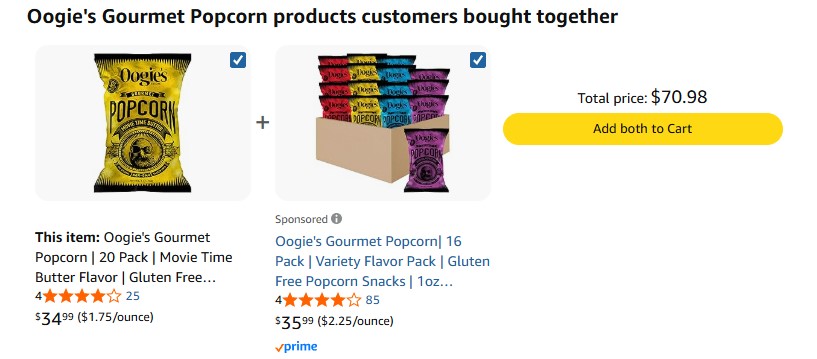
2. Make Upselling & Cross-Selling Feel Effortless
Pitching a higher-end version or an add-on product on your DTC website at the right time can be the difference between a $20 and a $45 order.
As an Amazon seller, defensive PAT ads can also help you bend through the limitations of the marketplace and maximize your cross-selling or upselling potential.
Take a look at this brand loop campaign. They’ve tried to effortlessly introduce a latest model at a higher price and loaded features that potential buyers, while checking out this particular ASIN’s product page, may actually consider buying.
How SellerApp Helps:
SellerApp PPC management services help you analyze what SKUs are often bought together, which price ranges convert best, and what product to target for defensive ads, if you aim to cross-sell or upsell. You can simulate different combinations, test market reactions, and track which bundles drive real order value gains, all from one place.
3. Set Spend-Based Rewards (The Right Way)
This is perfect if you have your own ecommerce website.
Offers like “Spend $50, get free shipping” are psychology-driven nudges that teach you how to increase average order value by aligning with shopper motivation.
Customers hate leaving value on the table. If their cart is at $42, they’re far more likely to add something worth $10+ just to “unlock” that reward. They’re making the decision themselves so they realize its not a pushy upsell.
Thus, it raises the purchase ceiling and encourages add-ons as they toss in small items like travel-size versions, accessories, or low-cost SKUs just to hit the threshold. In addition, it feels like you’re saving money and over time, buyers become accustomed to spending more to access perks, your average order value inches up organically.
4. Adjust Pricing Based on Real-Time Trends
When you consistently offer spend-based rewards (like free shipping at $50 or a bonus gift at $60), your customers begin to internalize those thresholds. It’s like muscle memory for their wallets.
Over time, their “default” spending behavior shifts from “I’ll just grab one item” to “Let me add something else so I get the reward.”
Let’s say your Average Order Value was $32 before. You introduce a reward at $50. At first, only a portion of buyers stretch their spending, but over time, more and more customers habitually build their carts around that threshold, hoping for the reward.
Now suddenly, $50 isn’t the exception, it’s the new norm.
Thus, when customers get used to spending more per visit, that higher basket value becomes part of their routine.
5. Supercharge Your Listings with Premium Value Cues
Great copy. Sharp images. Clear benefits.. Premium listings build trust, reduce friction, and nudge shoppers toward higher-priced or bundled options, increasing the average order value because people buy perceived value, not just products
SellerApp’s Advantage:
SellerApp’s Listing Quality Index does more than superficially rate your listings. It tells you how to fix them. Titles, bullets, backend keywords, nothing gets missed. This is how you can organically increase average order value (ecommerce).
6. Know Which Customers Spend More and Why
Your email subscribers and repeat customers likely spend more than one-time mobile visitors. But are you serving them the right offers? If you’re not segmenting your audience by spend behavior, you’re flying blind.
When you understand which customers are already spending more and their reasons, you strive to optimize beyond just personalizing. This is the deeper layer of how to increase average order value at scale.
SellerApp’s Advantage:
SellerApp can help you group your audience by Average Order Value, order frequency, geography, device, and more. Analyze why top spenders convert.
Consider if it is the product? The offer? The time of day? Build smarter remarketing campaigns via Amazon DSP with hyper-relevant messaging for each audience or offer.
7. Run Limited-Time Cart Incentives
Shoppers love a good reason to spend a little more, especially when there’s a deadline.
A simple nudge in the form of “buy products $70 today of XYZ brand and get a free sample” can instantly boost your average order value.
It adds urgency, makes the purchase feel rewarding, and often turns a casual scroll into a bigger, faster checkout.
SellerApp’s Advantage:
Amazon ad experts at SellerApp can track high-performing campaigns, and if you’re handling ads by yourself, you can use our Amazon Business Alerts feature when urgency-based strategies start to plateau, so you always stay ahead of the curve!
They can also run a limited-time deal like this to accelerate the sale, which may help you land an Amazon badge which can help you rake in those organic sales.
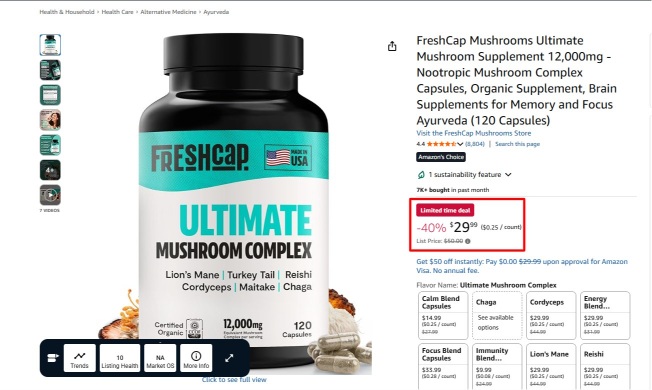
8. Retarget with Value Packs
When someone views your product but doesn’t buy, that’s not a lost cause. Rather, it’s an open door. Maybe they weren’t sold on the value, or didn’t see the right offer. This is where retargeting works wonders.
Use Sponsored Display campaigns to re-engage those high-intent shoppers with personalized offers or time-sensitive discounts. It’s your second chance to seal the deal and increase average order value.
SellerApp’s Advantage:
SellerApp’s PPC experts build strategies around ads and offers that convert and boost cart size. Thus, SellerApp Ad agency can help you run Sponsored Display campaigns effectively to retarget high-intent viewers with high-value bundle creatives.
9. Offer Multi-Unit Discounts (Tiered Pricing for FBA SKUs)
Amazon allows you to set quantity-based discounts, aka “Buy More, Save More” deal’s directly on your FBA listings. This isn’t just a pricing gimmick; it’s a power move for AOV. For example, 1 unit costs $25, 2 units can cost $24 each, and 3+ units may cost $22.50 per unit.
When done right, this encourages stocking up (especially for consumables, like supplements or pantry staples) and boosts total cart value without slashing margins.
SellerApp’s Advantage:
With SellerApp ecommerce ad agency, you can get the best converting prices as the experts will keep a tab on competitor pricing to stay within profitable discount thresholds.
They will also monitor how your tiered offers influence Buy Box eligibility (essential to protect your visibility), and at the end of each week you’ll receive reports on how pricing changes affect Average Order Value and conversion through real-time performance dashboards.
10. Tailor Strategy to Seasonality and Timing
Customers don’t spend the same way every day of the year. A customer might hesitate to splurge on a Tuesday in April, but come Black Friday weekend or right after payday.
That’s why blanket Average Order Value strategies fall flat. Offering a “Buy 2 Get 1” promo in a low-spend week might not move the needle. But the same offer during a payday weekend? That’s gold.
SellerApp’s Advantage:
With our agency insights, you can match your upsells, bundles, and thresholds to your audience’s actual buying cycles, not a static calendar. The best part is that we have a team of experts who have helped 100+ sellers boost sales following seasonality cycles.
Why Average Order Value (AOV) Matters More Than You Think for Amazon Sellers
Every Amazon seller wants more sales, but what if you could increase your revenue without chasing more traffic or clicks? That’s where Average Order Value (AOV) comes in.
Learning about AOV also includes your understanding of how to increase average order value for each transaction.
Let’s break it down.
1. You make more money from the same number of customers
Amazon traffic is expensive and competitive. Rather than chasing more clicks or impressions, sellers can choose to increase their average order value and grow revenue by making each transaction worth more. Let’s say your Average Order Value goes from $22 to $38, you’ll experience a 72% increase in revenue per order, without even touching your ad budget. That’s how smart sellers scale.
2. Amazon seller fees hit differently when the Average Order Value is high
Fulfillment fees, referral fees, shipping costs etc., often static per order irrespective of price. When your average order value on Amazon spikes, those fixed costs become a smaller percentage of each sale value, which means better profit margins without changing your product or price.
3. Higher Average Order Value boosts your ad performance
Every time you run an Amazon PPC campaign, whether it’s Sponsored Products or Sponsored Brands, you’re paying per click. But here’s the thing, you’re not charged based on how much the shopper buys, but based on how many ads they clicked.
So if your average order value is low, let’s say $12, and you’re spending $2 per click, you don’t have much room for profit, that too after Amazon’s fees and shipping. Now, imagine your AOV is $40. That same $2 click becomes much more efficient as your scope of profit is higher.
Even on case your conversion rate stays the same, you now earn more per sale, meaning you can afford to spend more per click and still be profitable by increasing the scope of conversion. This means a higher average order value stretches your ad budget and gives you an edge.
4. It unlocks advanced product bundling strategies
Low Average Order Value is your signal to test Amazon product bundles or upsell campaigns. Many customers are already buying more than one item, so why not guide them? Because the ultimate goal is to drive higher cart values with minimal effort.
5. It influences your Buy Box win rate
This one’s underrated. A higher Average Order Value often comes with better shipping efficiency and consistent pricing. These two factors can improve your Buy Box eligibility. Even small improvements to AOV can help you appear more competitive in Amazon’s eyes.
Here’s how:
When your Average Order Value is higher, it usually means:
- You’re bundling products or offering better deals per order.
- You’re selling more per customer interaction.
- Your fulfillment operations are more efficient per dollar earned.
All this sends a signal to Amazon that you’re maximizing value per transaction.
Higher AOV translates to better margins. This allows sellers to offer more competitive pricing or offer faster shipping options (like SFP or FBA), both of which boost your Buy Box eligibility.
So while Average Order Value isn’t a direct input in the Buy Box algorithm, it strengthens all the things that are.
6. Drops in AOV are red flags
Monitoring AOV over time can help you spot issues before they spiral. When your Average Order Value (AOV) suddenly dips, it’s a signal.
It could mean a variety of things.
- Customers are no longer bundling products the way they used to.
- Your upsell or cross-sell offers aren’t converting.
- A promo just ended and buyers are pulling back.
- Or worse, customer trust or buying power is fading.
If you’re running ads, a lower AOV directly eats into your margins. Thus, your average order value on Amazon becomes a kind of business health check. Keep a close check on these red flags to increase average order value for your e-commerce business.
Final thoughts
Average Order Value is more than just a snapshot of spending; it’s momentum in motion. When you start treating AOV like a strategy, not a stat, you shift from reacting to revenue to designing it.
So test, learn, adapt, and let every order shape a sharper, more intentional business, and when you optimize your strategy to increase average order value in e-commerce, you’re not just boosting revenue, you’re scaling sustainably.
And if you want to get there faster, SellerApp’s advanced reports can give you a clear in in-depth view into buying behavior, bundling potential, and pricing gaps. Our Managed Services go one step further, running targeted campaigns, optimizing listings, and structuring. These offerings help you optimize for AOV, in the bigger picture, and as a byproduct, it boosts your revenue.
Additional Read:
eCommerce Help Desk: What Is It and Do You Need One?
Hypercharge Your E-commerce Brand With Revenue-Based Financing!
Top 10 Essential Ecommerce Pricing Strategies
8 Tips to Future-Proof Your Brand On And Off Amazon


